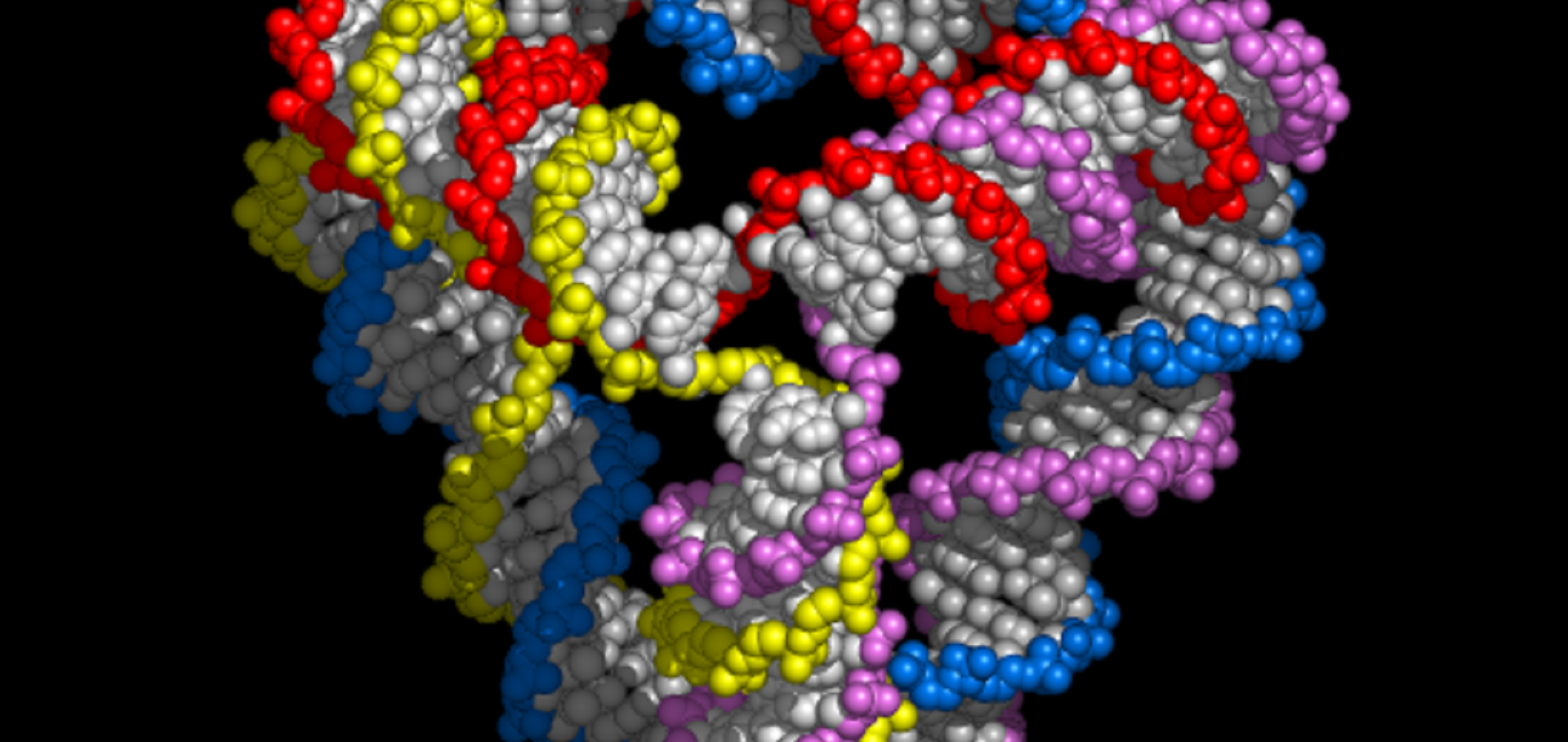Design and assembly of double-crossover linear arrays of micrometre length using rolling circle replication
Nanotechnology 16:9 (2005) 1574-1577
Abstract:
We demonstrate the use of rolling circle replication to template linear DNA arrays whose sizes bridge the gap between nanometre-scale self-assembly and top-down lithographic fabrication. Using rolling circle replication we have produced an oligonucleotide containing several hundred repeats of a short sequence motif. On this template we have constructed, by self-assembly, an array consisting of two parallel duplexes periodically linked by antiparallel Holliday junctions. We have observed arrays up to 10 νm in length by atomic force microscopy. © 2005 IOP Publishing Ltd.A free-running DNA motor powered by a nicking enzyme.
Angew Chem Int Ed Engl 44:28 (2005) 4358-4361
Engineering a 2D protein-DNA crystal
Angewandte Chemie - International Edition 44 (2005) 3057-3061
Design of an autonomous DNA nanomechanical device capable of universal computation and universal translational motion
LECT NOTES COMPUT SC 3384 (2005) 426-444
Abstract:
Intelligent nanomechanical devices that operate in an autonomous fashion are of great theoretical and practical interest. Recent successes in building large scale DNA nano-structures, in constructing DNA mechanical devices, and in DNA computing provide a solid foundation for the next step forward: designing autonomous DNA mechanical devices capable of arbitrarily complex behavior. One prototype system towards this goal can be an autonomous DNA mechanical device capable of universal computation, by mimicking the operation of a universal Turing machine. Building on our prior theoretical design and prototype experimental construction of an autonomous unidirectional DNA walking device moving along a linear track, we present here the design of a nanomechanical DNA device that autonomously mimics the operation of a 2-state 5-color universal Turing machine. Our autonomous nanomechanical device, called an Autonomous DNA Turing Machine (ADTM), is thus capable of universal computation and hence complex translational motion, which we define as universal translational motion.Designs of autonomous unidirectional walking DNA devices
LECT NOTES COMPUT SC 3384 (2005) 410-425


